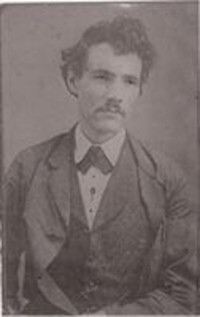William Samuel Parrott
William Samuel Parrot (1843/1844 -1915) is a mysterious figure in the Pacific Northwest; however, the known information shows a clear path toward painting. Born in Missouri in 1843, Parrot lived there with his family until they moved to Oregon in 1847. At an early age, Parrott became invested in painting and sketching, using wildflowers as pigment and hair as brush bristles. In 1867 he began his pursuit of an artistic career by moving to Portland and opening a studio in the National Bank Building. He was fairly well known for his work but didn’t take on students, and in 1887 he moved out of his studio to paint and travel around Oregon, Washington, and California. During this period, he spent most of his time alone in the mountains and was rumored to be a recluse, emotional, moody, as temperamental as the land he painted, and protective of his work.
Parrott lived on the land he painted as he went from landmark to landmark, recording the natural beauty and wonders of the Pacific Northwest, such as Mount Hood, the Columbia River, and Multnomah Falls. He painted other subjects such as historical paintings, but the majority of Parrott’s oeuvre is beautiful and luminist landscapes. In time he settled in Oakland, California but moved to Washington by 1911 with his sister Jane, and she took care of him in his dying years until he passed away in 1915.
Parrott was one of the first American-born artists to display his works of American landscape and, more specifically, Pacific Northwest landscape in Europe, even at the Louvre. He thus served an important role in history as he elevated Northwest landscape to an international height it had not known before. The tradition of landscape Parrott seems to take from- the Hudson River School -is dictated by the traditions of Luminism and Romanticism. These two schools of painting explore light effects on landscape and the grandeur and terrifying but awe-inspiring aspects of nature, respectfully. These schools served as the stylistic foundation for landscape painting in the Northwest and continue to influence the work of Northwest artists today. One of the first well-known European artists to paint in the Northwest was Albert Bierstadt (1830-1902), a German-American painter who took notes from Romanticism but was overall a student of the Hudson River School who painted the Puget Sound on the Pacific Coast in 1870. Thus, Romanticism is one of the building blocks of Pacific Northwest landscape tradition, and this awe and terror as a response to the landscape can be seen in Pacific Northwest regionalism.

